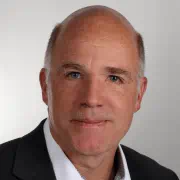Arcadis data center specialist Stephan Maly on the climate protection ambitions of an industry of the future
Question: Stephan, historically, data centers have not been known for leading the development of industrial Net Zero technologies. How would you describe the industry’s current stance in this regard?
Maly: That is certainly correct from a "historical" perspective. Of course, you have to take into account the incredible growth pressure in the past. The demand for cloud-based computing capacities has increased exponentially and neither the private streamer nor the professional colocation customer wanted or wants to do without these IT resources. As far as the current status quo is concerned, I can hardly imagine a sector with comparable transformation dynamics in terms of energy efficiency, carbon footprints and sustainability balances. Net Zero Data Centers are an absolute hot topic in the industry that nobody can ignore.
Question: What does that mean in concrete terms? Can you give us some practical examples?
Maly: The projects in which our teams are involved can be roughly divided into three categories or time scales.
Firstly, there are the visionary greenfield concepts, in which everything that intelligent building and system technology and control will make possible in the foreseeable future is integrated, combined with multifunctional utilization combinations that complement each other in terms of energy.
The second category is new data centers with a development timeline of a few years, whose efficiency is optimized with the intelligent implementation of standard technologies and energy networking.
The third category is the efficiency optimization of existing data centers that are already in operation. Here too, there is still astonishing optimization potential that is sometimes underestimated.
Question: Let's start with the "visionary" class. What exactly is in the development pipeline?
Maly: One example: Our US colleagues are delivering an interdisciplinary planning and consulting package for a latest-generation data center in San José, California.
The key data: Use of state-of-the-art fuel cells instead of conventional emergency power generators, thermal coupling of the fuel cells to the server cooling system, utilization of the CO2 and H2 O output from the cells in a connected hi-tech greenhouse, the products of which are to be marketed regionally. Maximum resilience and harmonious local integration, circular economy on a small scale, combined with a minimized CO2 footprint. The result is a flagship project that will set standards in the sector.
Question: Beyond ‘visionary’, are there are new construction projects that lack grand aspirations, but demonstrate what is already possible today in the "everyday business" of data center planning.
Maly: Yes. We are involved in the planning of a data center in the Rhine-Main region, that is being built on a disused industrial site. Specifically, a large part of the total area will be unsealed and planted, and the server cooling system – where the ‘waste’ is heat – will be connected to the municipal district heating network, where heat is the ‘goal’.
The conversion and revitalization of urban brownfield sites for data centers can be perfectly combined with the use of waste heat to generate energy. A classic synergy effect in terms of climate protection. Factors such as land balances and waste heat utilization in the local network are therefore included in the sustainability balance.
Question: Let's move on to the third category, the existing data centers. What can realistically still be achieved in terms of climate footprints and carbon footprints after commissioning?
Maly: Much more than you might expect. The success factor here is to combine technical expertise with business know-how. The example: we are currently developing a Net Zero strategy for a site in Amsterdam that is operated by a global cloud service provider.
We approach such challenges with sophisticated analytical tools. In these cases, we operate in conceptual worlds characterized by marginal abatement costs, power usage effectiveness (PUE), CapEx, OpEx, RECs, SBTis and BAU forecasts. This meticulous detailed work then creates a basis for modernization programs that offer a reliable improvement in the sustainability balance with a defined use of financial resources.
Question: The international trade magazine "DataCentre" recently awarded Arcadis a top position in a ranking of the best consultants for the design, planning and management of data center infrastructure. Why do you think Arcadis ranked so highly?
Maly: As is always the case with such rankings, we are delighted with the fruits of our joint endeavors, but they also trigger our ambition to continue playing in the ‘Champions League’. At Arcadis, we can build on a combination of unique selling points that position us perfectly for the transformation of the data center world: sustainability expertise, a digitalization focus, interdisciplinary capabilities and global presence. It is part of our DNA as a company to not just be in the middle of such challenges, but to pave the way as pioneers.
Question: Back to the start: so, the Net Zero Data Centre is a hot topic, but is it more of a vision than an illusion?
Maly: Definitely a positive vision, the reality of which is not that far away. We are passionate about realizing the vision and want to work with others that feel the same.






